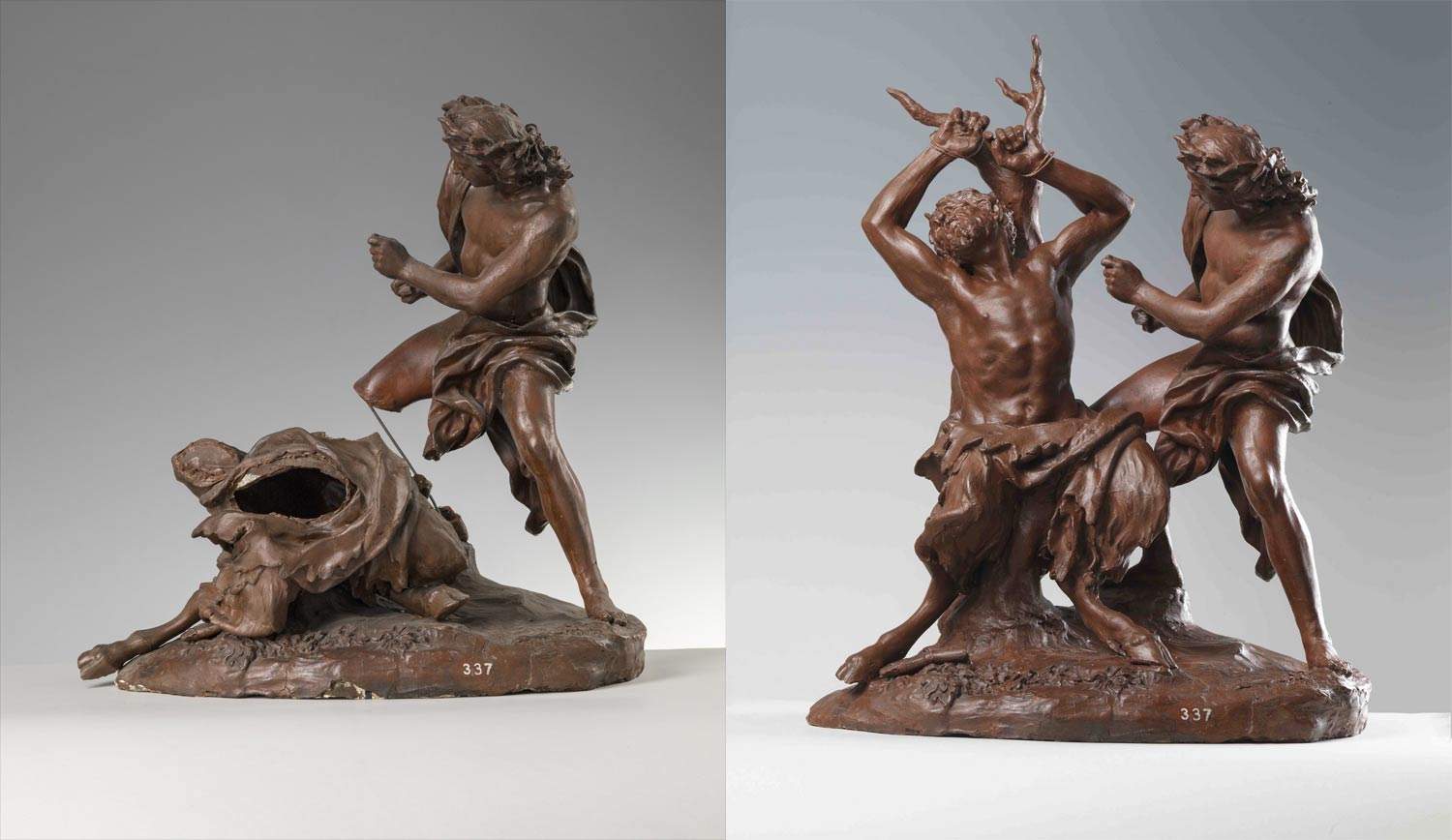Eight valuable Ginori Museum models restored thanks to BIAF support
Thanks to the financial support of the Florence Biennale Internazionale dell’Antiquariato , eight wax sculptural models belonging to the Ginori Museum in Sesto Fiorentino have been restored. The Ginori Foundation started this important and necessary restoration campaign already in recent months, coordinated by the Regional Museums Directorate of Tuscany with the scientific collaboration of the Opificio delle Pietre Dure, which has been engaged in a general reconnaissance of the state of conservation of the works since 2021. The eight wax sculptural models most in need of urgent conservation work were entrusted to the care of restorers Maria Grazia Cordua and Francesca Rossi. The surprising results of their intervention are documented in the volume Collecting ’for the Use of the Factory’. The restoration of eight wax sculptures from the Museo Ginori’s 18th-century collections, published on the occasion of the 32nd edition of the event.
Among the models undergoing restoration, the group depicting Apollo and Marsyas, taken from a work by Florentine sculptor Giovan Battista Foggini and made on a cast made in 1748 by his son Vincenzo, deserves special attention. The restoration work in fact made it possible to recover the integrity of the work, which was in a fragmentary state and “collapsed” due to exposure to a heat source. “Apollo’s leg,” says the restorer of the Regional Directorate of Museums of Tuscany and director of the work, Giulia Basilissi, “was detached, while the figure of Marsyas had been severely deformed, so much so that his arms and the trunk of the tree had completely separated from the work. Fortunately, the deformation did not result in the total loss of the modeling, which was recovered thanks to the still malleable nature of the waxy impasto.”
Among the restored works are the groups with Venus Plucking Love and Leda with the Swan, whose bronze archetypes are due to the invention of the late Baroque sculptor Massimiliano Soldani Benzi; the Venus Callipige (taken from an ancient marble preserved at the National Archaeological Museum in Naples) and the reliefs with Laocoon with his sons and Scene of Sacrifice, which document the manufacture’s acquisition of models of the most famous ancient statues, to be translated into porcelain to meet the demands of Grand Tour travelers.
The models are part of the important collection of Carlo Ginori, founder of Manifattura Ginori di Doccia, who in addition to being a visionary entrepreneur practiced a quite unique form of collecting. From the very first years of his factory’s activity, in fact, Carlo Ginori purchased numerous forms directly from the workshops of the most important Florentine late Baroque artists in order to reproduce their works in porcelain. From the forms were taken models in wax, plaster or terracotta, which, displayed in the museum’s first nucleus, were shown and proposed to patrons. “This is a particularly valuable heritage,” explains Andrea Di Lorenzo, director of the Museo Ginori, “not only because it documents the encounter between porcelain and the great tradition of Florentine and Italian sculpture, but also because these models are sometimes unique copies of lost originals.” This collection “for the use of the factory” was kept for nearly three centuries within Ginori, only to fall victim to abandonment following the bankruptcy of RichardGinori and the subsequent closure of its business museum, now owned by the Italian state. Moisture, mold and temperature changes had severely damaged especially the fragile wax models, which reported cracks, lesions and detachments.
“The restoration of the waxes from the Museo Ginori collection,” explains Stefano Casciu, regional director museums of Tuscany, “represents a contribution of great importance for the public heritage and in particular for the hoped-for and long-awaited rebirth of the splendid collection of works from the Manifattura Ginori.” Satisfaction also shared by Fabrizio Moretti, Secretary General of the BIAF, who sees in this operation of private patronage the opening of new perspectives for the public cultural heritage: “The Ginori museum is a national excellence that must always be better known internationally, and with our contribution we hope to help in this intent,” he said.
Gratitude is expressed by the President of the Fondazione Museo Archivio Richard Ginori della Manifattura di Doccia, Tomaso Montanari, who explains, “After many years of neglect, it was the turn of the Italian state to save this extraordinary heritage and entrust it to a foundation entirely composed of public entities. It is really important that private entities also show their love, their solicitude, their generosity towards works so relevant for their history and artistic quality. It also seems to me remarkable that we have chosen to help a heritage that is less exposed than those perennially in the Florentine spotlight.”
Pictured: the model of theApollo and Marsyas before and after restoration.
 |
| Eight valuable Ginori Museum models restored thanks to BIAF support |
Warning: the translation into English of the original Italian article was created using automatic tools. We undertake to review all articles, but we do not guarantee the total absence of inaccuracies in the translation due to the program. You can find the original by clicking on the ITA button. If you find any mistake,please contact us.





























